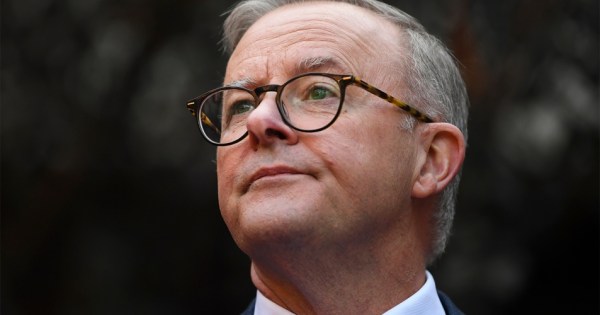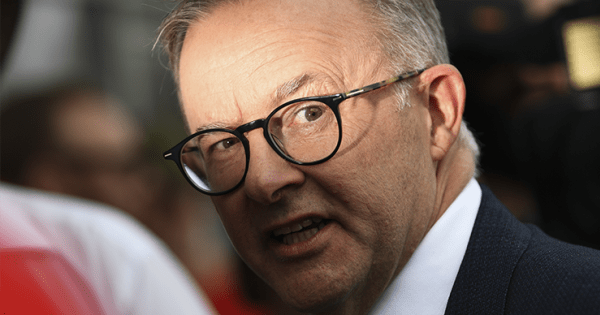Australia is in the middle of an emerging bubble in housing. There should be no quibbling about a percent here or a decimal point there or trying to excuse the sharp rise by arguing that it followed a fall in the first half of last year. The reality is that they exploded across Australia in the past six months of 2009 and finished the year on a surge.
Figures from the Australian Bureau of Statistics confirm today that showed house prices jumped a huge 13.6% in the year to December, with a rise of 5.2% happening in the December quarter alone. The September quarter’s increase was boosted to 4.4%.
In Melbourne prices soared by nearly 20%, a bubble if there is one. Market forecasts were for a strong 11% rise. They were too conservative.
The ABS figures, long criticised by some in the housing sector as being “too conservative”, were in fact above the 12.1% rise suggested by Australian Property Monitors last month, and the 11.1% increase claimed by RP Data.
The ABS figures are a preliminary estimate, but if sustained, they come close to matching the 14.0% rise in the year to December 2007. The 2009 performance represents a substantial turnaround from the 4.1% fall in 2008.
Given that prices then fell by 5.5% in the March quarter of last year and by a further 0.6% in the June quarter, the price rebound that happened in the final six months of the year was substantial and will bring a rate rise from the Reserve Bank tomorrow.
The ABS said that in the year to December “house prices rose in Melbourne (+19.7%), Darwin (+13.6%), Sydney (+12.8%), Canberra (+12.4%), Perth (+11.5%), Hobart (+11.0%), Brisbane (+10.9%), and Adelaide (+5.1%).”
For the December quarter the 5.2% national rise came from Melbourne (+6.8%), Sydney (+5.0%), and Perth (+5.7%). There were also positive contributions from Brisbane (+3.8%), Adelaide (+2.1%), Canberra (+3.6%), Hobart (+4.3%) and Darwin (+4.9%).
After this report it’s a wonder why anyone is still wondering or complaining about the Reserve Bank is lifting interest rates.
There are some though, in Sydney yesterday there was a strange bunch of of demonstrating outside the Reserve Bank’s head office calling for rates to be cut to 2.5%.
Those pie in the sky, self-styled investors have little idea what is going on the economy, if their calls are any guide to what they believe.
They are as out of touch as some in real estate and the advice industry who are urging the RBA sit pat.
A rate rise of 0.50% can be justified tomorrow from the RBA on these house price figures alone.
They are shocking. Even if the disappearance of some of first-home-buyers’ stimulus takes some heat out of the market, only more interest rate rises will bring this emerging bubble under control.
The first-home-buyers’ grants can’t be blamed for all the surge. They have been restricted to cheaper suburbs in the major cities, the second half rebound in 2009 was primarily driven by surging demand in some our most expensive suburbs.
The real action has happened in the expensive seaside, river and winner city suburbs that took the brunt of the sell-off when property prices fell during the credit crunch in 2007-08, which hit the financial sector harder than anywhere else. Investment bankers, brokers, lawyers, accountants and others in this sector were among the victims of retrenchment and forced sales.
Property prices in suburbs such as Mosman in Sydney, Brighton and South Yarra in Melbourne, Hamilton and Spring Hill in Brisbane, felt some of the pain. Now that’s being reversed.
RP Data.com’s head of research, Tim Lawless, said in commentary late last month:
“The strongest gains were recorded early in the year with national home values up 3.1% over the first quarter of ’09. The market was being led by first-home buyers and consequently the most affordable end of the market saw a 3.9% lift in values.
“Over the second and third quarters it was upgraders in the middle and the top ends of the market that generated the strongest gains.
“The top 20% of Australia’s most expensive postcodes increased in value by 9.5% over the last three quarters of the year compared to 4.1% growth in cheapest 20% of postcodes.”
Not even a surprise fall in media job ads last month will stop the rate rise tomorrow.
The latest ANZ survey showed a fall of 6./1% in jobs advertised in newspapers (down) and on the internet (also down)
The fall to an average of 134,106 jobs per week, seasonally adjusted, compares to the 4.6% rise in December that was revised down from the first estimate of 6%.
In a statement, ANZ acting-chief economist Warren Hogan said: “The monthly decline in job advertisements highlights the fragility inherent in the current recovery phase, but we should see more solid growth rates as we move further into 2010.”
Major metropolitan newspapers carried 16.6% fewer job ads in January after being up an encouraging 11.6% in December, to an average of 8796 per week, seasonally adjusted. Newspaper job ads 23.5% down on January 2009.
Newspaper job ads declined in all states and territories in January, with the largest monthly falls recorded in Victoria (-26.9%) and Tasmania (-25.6%) and the smallest monthly falls recorded in WA (-4.6%) and the Northern Territory (-11.9%)
The number of internet job ads fell by 7.5% to average 125,310 a week, down 26% from January 2009, but 7% above their July 2009 low point.








“Australia is in the middle of an emerging bubble in housing. ”
Major understatement, we are now in unchartered territory thanks to Rudd’s changing of the FIRB laws.
If there is a correction now ( and there must be) 10’s of thousands will be in severe stress.
Rudd……… you are an incompetent burden on the entire economy.
Dodgy statistics!
Top 20% up 9.5%, bottom 20% up 4.1%
What about middle 60% no change ? going down?
What about poor clearance rates ?
What housing bubble? Using ABS figures, several Australian capitals have had minimal or negative house price growth in real dollar terms since their pre-GFC peaks. Check these figures:
Sydney peaked Dec 2003. House price growth to Dec 2009 = 7%. Sydney CPI for same period = 18%.
Perth peaked Mar 2007. House price growth to Dec 2009 = 4%. Perth CPI for same period = 9%.
Adelaide and Hobart have performed almost exactly on par with their CPI growth since their respective peaks.
Only Darwin, Melbourne and Brisbane have significantly exceeded their CPI figures. Canberra is slightly ahead but below the national figure.
Even taking a national approach, house prices have only grown at 2.8% over CPI since December 2003. Most mortgagors would have been paying higher interest rates to their lenders than the 5.7% annual compound growth they have experienced over the last 6 years.
By comparison, even including the effect of the GFC the All Ords index has risen at compound rate of 6.9% (or CPI+4%) over the same period.
To add a fraction more detail to my last comment, for those who are interested, Melbourne house price growth has been CPI+5.6% since its previous Dec 2003 peak and Brisbane has been CPI+4% since its Jun 2004 peak.
CPI + 5.6% ? even at that rate it’s a bubble but it’s much worse than that, the recent figures are alarming to say the least, no point averaging it across a period of low growth, we’re talking about the Rudd years from Dec 07, just over 2 years, since then there has been enormous damage done to our economy.
I guess if you average the figures across low demand rural areas it might seem mild but in the inner suburbs it’s a nightmare.